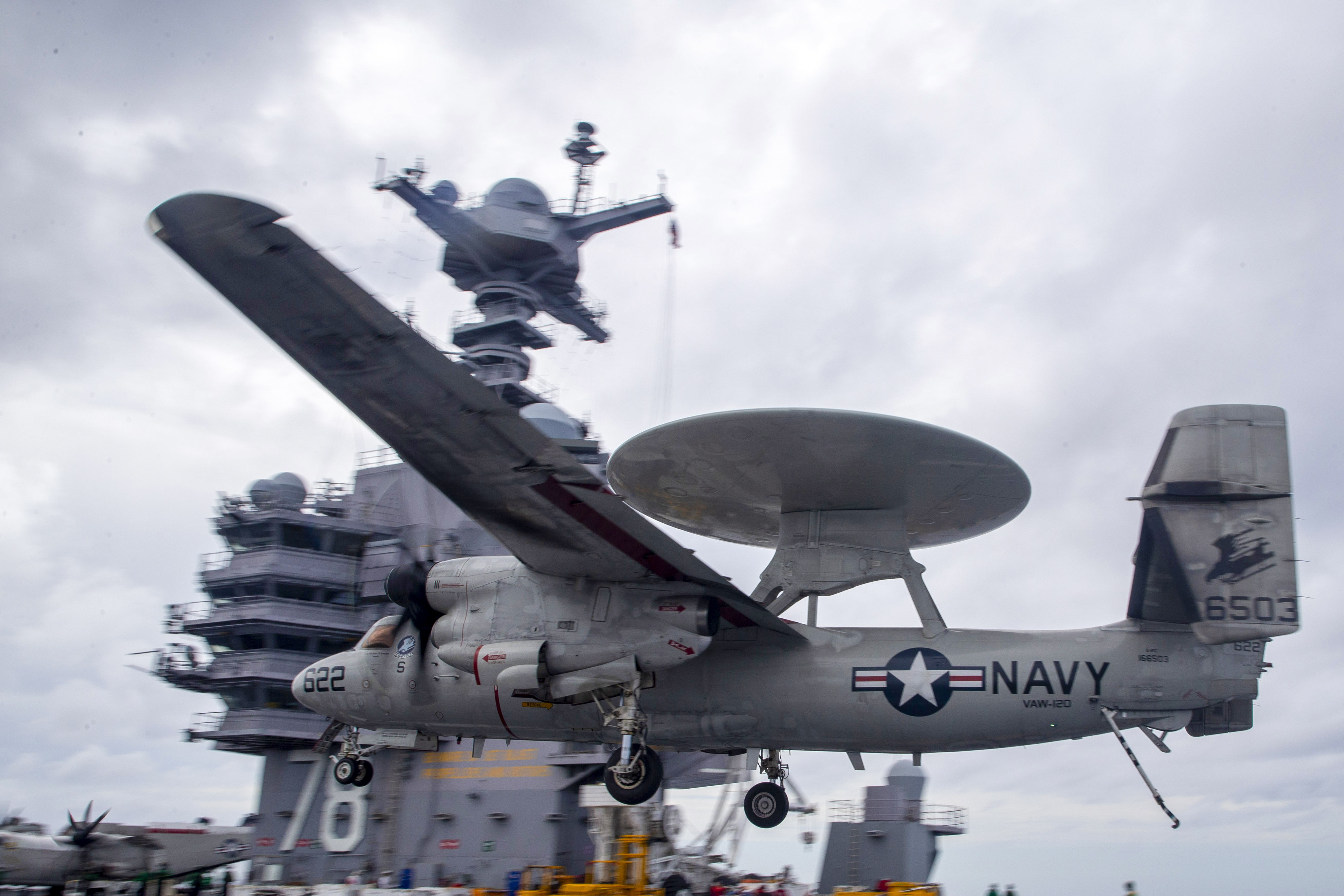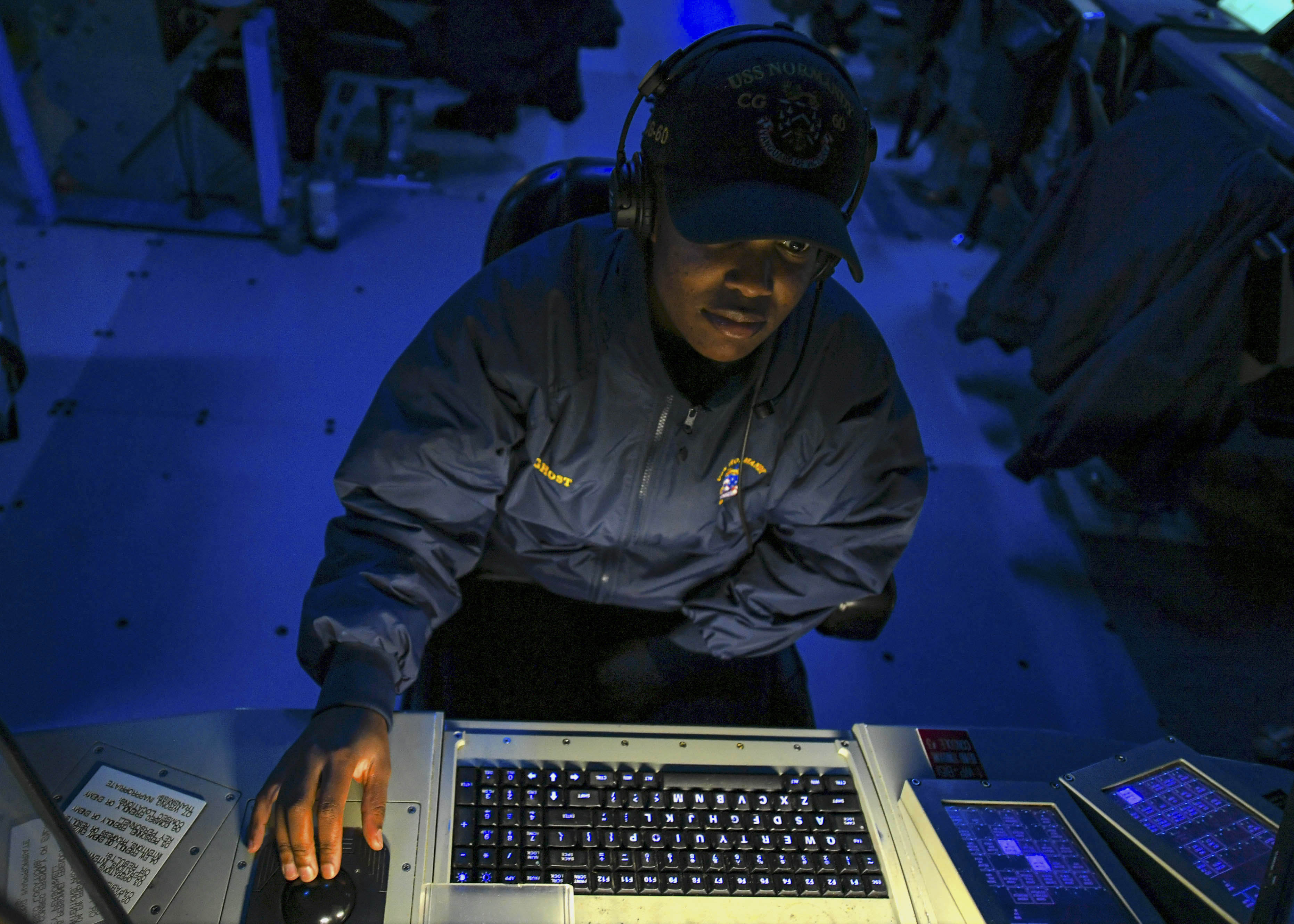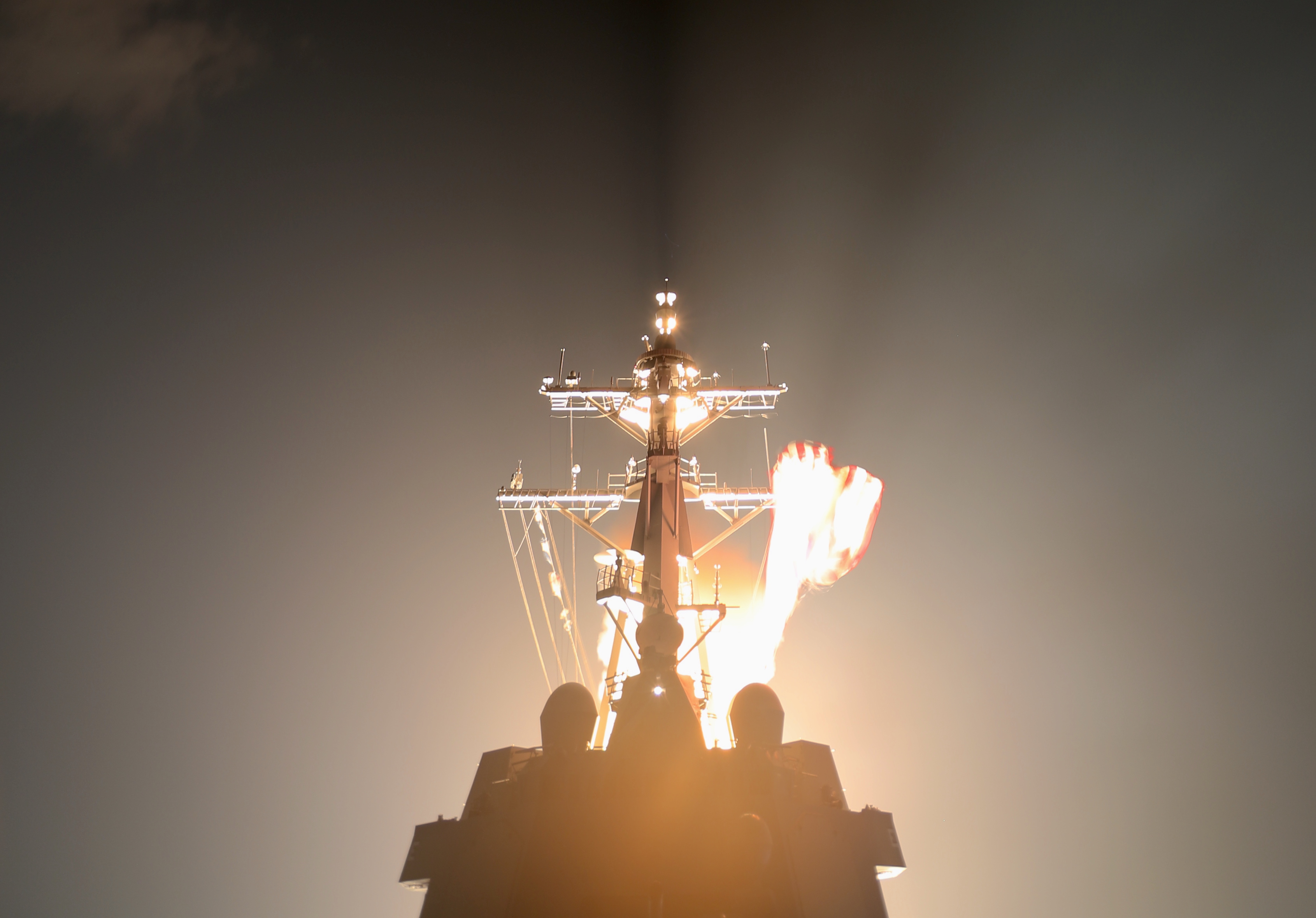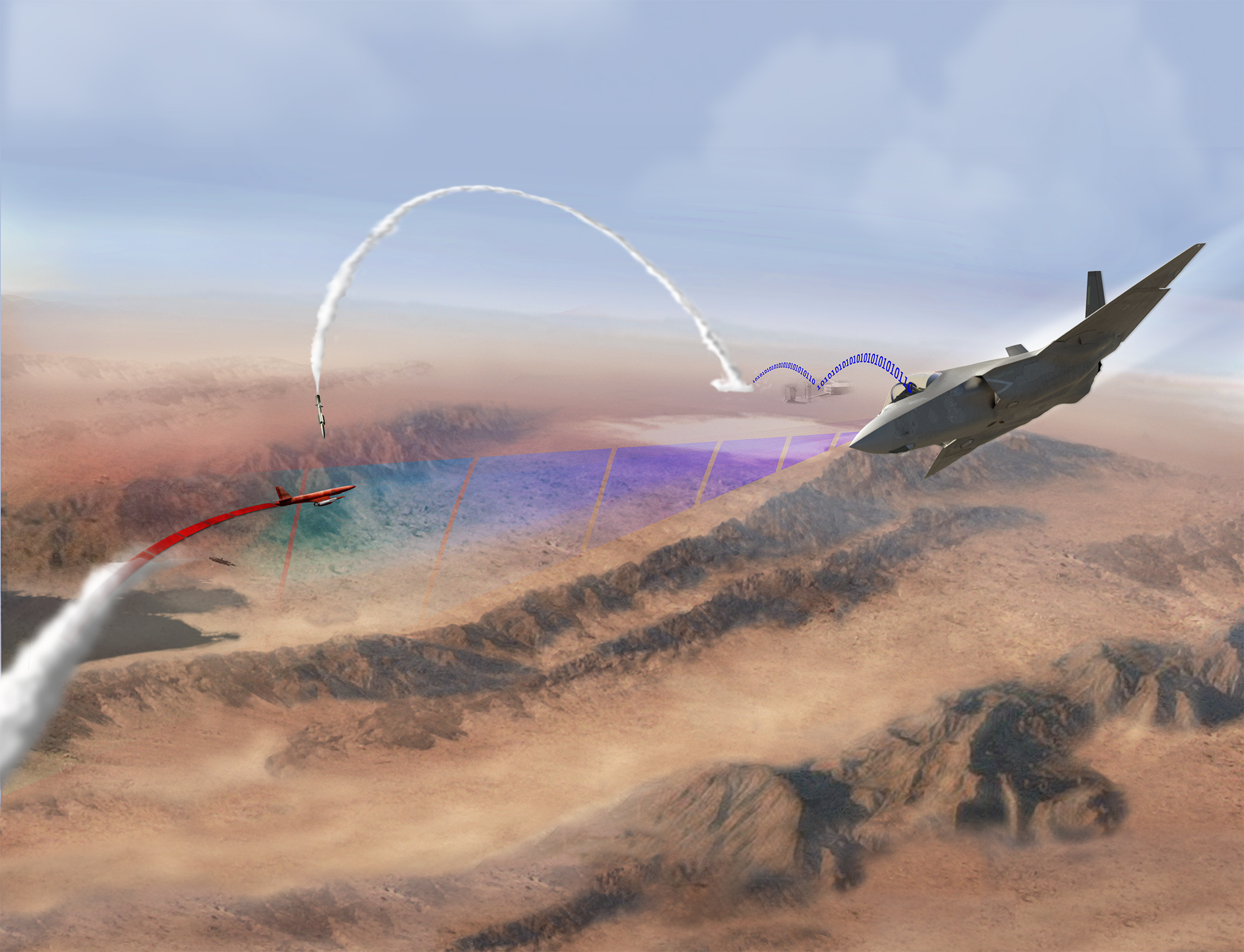
This post has been updated to clarify remarks made by Rear Adm. Doug Small.
The Navy envisions a future fleet with manned and unmanned ships, submarines and aircraft operating in a dispersed manner and collecting a ton of data to fill in a common operating picture – which operational commanders could then use to, if ever needed, have the best sensor platform send targeting data to the best shooter to attack an enemy. That entire vision, though, would require a robust network that could withstand an enemy cyberattack; that could have enough bandwidth to manage video, voice, and targeting data coming and going; and could present a huge amount of data in a visual way that helps commanders make quick and good decisions.
As the service sets off to develop a massive Naval Operational Architecture (NOA) – including new networks, data standards and formats, battle management tools and more – by the end of the decade, the first slice of the pie will go out for operational testing with the Theodore Roosevelt Carrier Strike Group in 2023, two admirals have said recently.
The chief of naval operations in October directed Rear Adm. Doug Small, the commander of the Naval Information Warfare Systems Command, to spearhead Project Overmatch, which will focus the Navy on the development of NOA by the end of the decade. Still, with the NOA effort having so many pieces, Small and his team at NAVWAR are focused more on the networks side of the effort through Project Overmatch, and Deputy Chief of Naval Operations for Warfighting Requirements and Capabilities (OPNAV N9) Vice Adm. Jim Kilby and his team on the OPNAV staff are focused more on battle management aids that warfighters would use.

Kilby announced last fall that, as a first step on his side of developing NOA, the Navy would field a Battle Management Aid, known as BMA 2020, on USS Carl Vinson (CVN-70).
More recently, Kilby announced that a first iteration of the network side would be fielded with the Theodore Roosevelt Carrier Strike Group in 2023. Small confirmed the details of the early fielding effort but did not acknowledge the ship or year when the system would be fielded.
“When you have a project the size of Project Overmatch – sort of connect everything and bring [artificial intelligence] and [machine learning] to everything – you have to go at it in an agile manner. So step one for us was, let’s break this thing down into agile chunks and take a look at how – what are the things that we’re working on currently now that we can take advantage of and then grow from there,” Small said in late January at a virtual event hosted by the American Society of Naval Engineers.
“The first thing you want to do is get what you’d call a minimum viable product out there for people to be able to use. And you learn from it and while you’re building additional capabilities you at least have something out there to start with. And it’s a military usable set of capabilities. So that’s sort of the concept behind the minimum viable product. It consists of things like networks that are brought in as part of Overmatch, certain configurations of networking gear like CANES, certain sets of management aids and planners and things like that, and then defining data structures, right, for that first increment of capability.”

Small added that he didn’t want to get into the timeline for developing and fielding this piece of Project Overmatch but that “we’ll take some time to develop that and then get it out as it’s ready.”
Kilby, in a presentation last month at a virtual event hosted by the Surface Navy Association, said there are four overlapping pieces to the NOA effort: the networks, which fall under Project Overmatch; BMAs and other tools; data standards to allow for precision fires; and an infrastructure that would rely on cloud and edge computing.
Kilby said the Navy is committed to its Distributed Maritime Operations concept, but that can only work if the Navy successfully creates a NOA and develops concepts of operations that best leverage the unique advantages it would present – faster decisions, leveraging information from across the fleet, integrating manned and unmanned assets and more.
He said BMA 20 will provide a common-sight picture to everyone from the naval flight officer in an E-2D Advanced Hawkeye to the air team in the combat information center on a cruiser.
“It’s a step in the right direction, but we have a ways to go,” he said.
BMA 20 wasn’t built to align with the rest of NOA but would give a common picture that’s not available today and would help the fleet start learning how to operate with that kind of information at operators’ fingertips.
Similarly, Small said the network fielded with the TR CSG won’t be the final product but will help NAVWAR get fleet feedback to continue its development.

“One of the key things about the effort that we’re doing here too is – I call it a fleet centered design. And so, beyond just going to the fleet and saying, ‘hey what are your requirements,’ – which of course we’ve done over and over and coordinating at deep technical levels on what is required for the fights today, frankly – we have partnered with other elements of the fleet to actually bring operators into the lab as we’re doing the development. So beyond the notion of [a minimum viable product] and when we ship it out, we’re actually bringing the operators into the lab,” Small said at the ASNE event.
“So even today, we’re having a discussion with the old like [joint interface control officers], right. How are you going to operate this sort of network of networks? And getting down to what are the tools required for you to be able to establish, maintain, fight, defend a network of networks. Very fleet-centric design, focusing on who is the one who actually has to take that information in and fight it and make sure that we’re meeting those needs early in development and then throughout development to include all of our test events, all of our live-virtual-constructive events, all that. So that by the time we do get any [minimum viable product] or any product out there, the design has been helped by the fleet before it even gets out there. So that’s really a key tenet of the project.”
Small said during a separate presentation at the SNA symposium that the challenge with network development wasn’t just that it had to include so many different kinds of sensors’ data and communication from different kinds of platforms. He said it also had to consider overall bandwidth needs during normal operations, as well as how to prioritize only the most important information during times when the Navy needed to keep quiet and practice strict signatures management. The network will need to be big enough to pass all information when that’s needed, but also smart enough to get top-priority information to its destination as fast as possible when one part of the network is down due to an attack or due to nodes going quiet to avoid detection.

Though the Navy has a lot of work to do this decade to make NOA a reality, Kilby said he was optimistic about the service’s ability to leverage past work.
“Some of you were active participants in the journey from an Aegis Combat System that purposely drove Aegis to an organic track, to today where we have an Aegis Combat System that is a critical member of the BMDS that accepts the best sensor data to close the fire control loop. The Ballistic Missile Defense System is truly a system of systems,” he said to the SNA audience.
“Similarly, Navy Integrated Fire Control is a system of systems approach to air defense. Smart and dedicated engineers worked across existing programs of record to provide a solution where the whole system is greater than the sum of its parts.”
“We’re not starting this journey from a cold start: we’ve been working towards it for some time. The introduction of [commercial off-the-shelf] hardware into Aegis and the development of a common source library have positioned us to take the next steps,” Kilby added.





